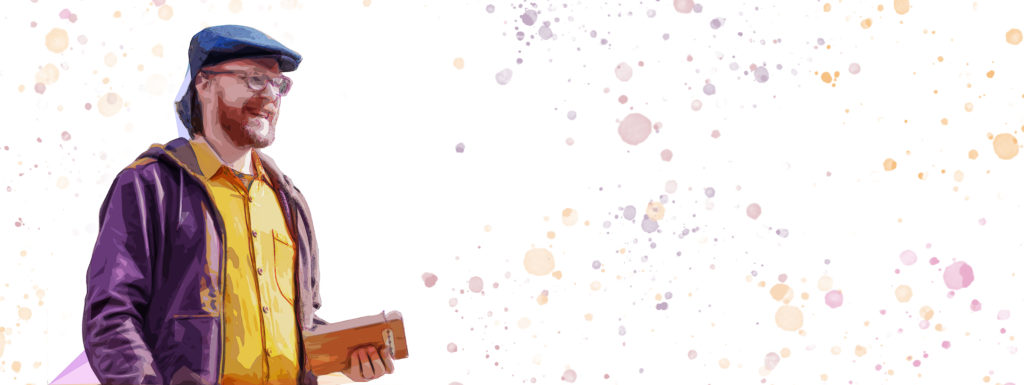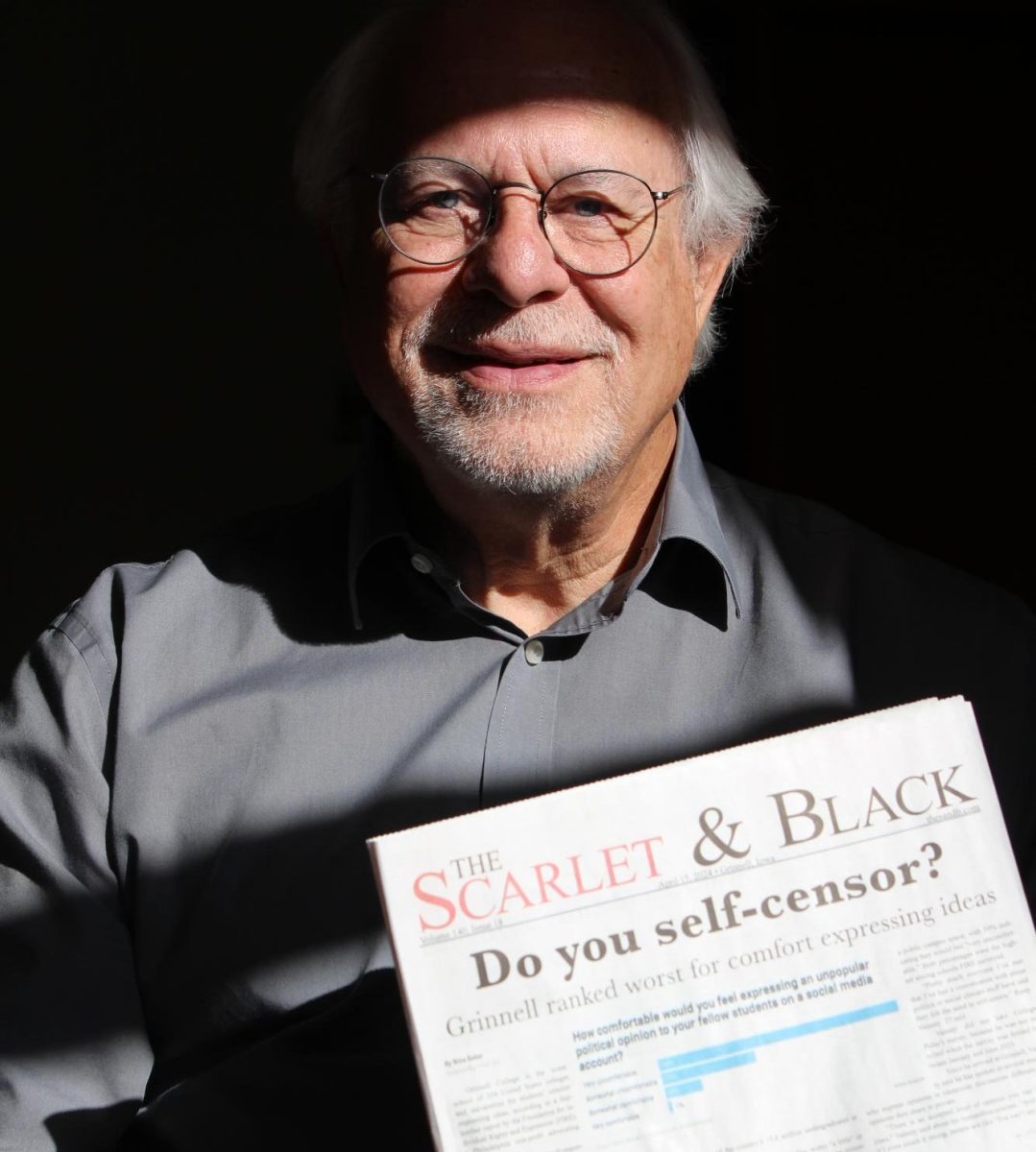By Tony Perman
Hope is a powerful thing; but, like all powerful things, it has a dark side. It can be misunderstood, exploited and weaponized. I tried to teach this basic truth to my students during my class this fall called “Songs of Hope,” but I don’t think I really understood it until the end. That is when I realized how much I’d gotten to experience one of the secret joys of teaching: learning more from my students than the texts I assign them. They’ve helped me embrace the reality that hope is about the future; more specifically, it’s about using one’s fear instead of ignoring it, accepting the traumas of the past to shape a less traumatic future. My students also taught me that it’s not enough to realize hope’s own aspirations and escape the dangers of mere wishful thinking. Hope is a call to action. Rather than accepting a status quo that has exposed its own reliance on entrenched social and racial inequality, hope generates courage.
A frustrated first-year college student is an unexpected source for lessons in courage.
Often marked as carriers of disease and social irresponsibility, college students have become a maligned bunch in many COVID contexts these days, so often blamed for spikes in cases and the spread from campuses to communities, described as getting “townies” sick. Until vaccines arrived, The New York Times coronavirus tracker had three maps on their homepage: U.S. hot spots on the left, worldwide cases on the right and, tucked in between, college cases. Campuses throughout the country have wrestled all fall with whether to allow students to come or to keep them at home, and how to survive both medically and financially. In many situations, such as those in Michigan State, Texas Tech, Iowa State and elsewhere, outbreaks of the virus were pinned on the students.
There have been numerous pieces pointing to college students for viral outbreaks. I’m not interested in piling on to that narrative. Instead, I want to celebrate those students who not only rose to the challenge of pandemic pedagogy and gave me hope for the future but taught me the necessity of hope.
Hope is a call to action. Rather than accepting a status quo that has exposed its own reliance on entrenched social and racial inequality, hope generates courage. -Tony Perman
The deck seemed stacked against my students’ success as we began classes in the fall in our own “inspirational” hall of learning — not some Victorian-era stone hall or a cutting-edge classroom, but alone in our respective bedrooms and kitchens tethered via WebEx. Most of these students were denied the transformative rite of passage that is high school graduation, many watched as their friends went off to reside on campuses risking in-person instruction and some ended up on campus for circumstances beyond their control only to live alone in a town with no connections and a dorm with virtually no residents. They all seemed either stifled by a home life they thought they’d earned the right to flee or the solitude of isolation that is anathema to the thriving of the teenage brain. When I think back to my own first college semester, during the final throes of the first Bush administration, I remember awkward ice-breakers, collective music-making, learning to navigate the social waters of hundreds of eighteen-year-olds drinking, flirting and conversing and, eventually, my classes. By the time I graduated, those initial classes seemed like interruptions on my collegiate social education. Many of my students had taken to the streets over the summer in solidarity with Black Lives Matter and in support of George Floyd before their anticipated campus arrival. But they were suddenly stuck at home, and class on a computer with disembodied strangers was all they had.
And yet, they thrived. It was the first class I’ve ever offered with perfect attendance. The most a student was late all term was five minutes. After cutting back on readings and assignments for fear of overwhelming students in a time of such uncertainty, some of them asked for more! They wanted more online fora where they could communicate about class material with one another outside of class. When I made space for the students to choose the topics of the class and the readings for discussion, they embraced the opportunity to talk about race, social justice and the psychological implications of their own unexpected solitude.
After succumbing to the anxieties and realities of the burgeoning pandemic in its early days, I needed hope. Watching neighbors ignore health guidelines and politicians twist a health crisis into an opportunity for partisan grand-standing, hope was in short supply. I assigned students what I needed to hear. We read Ernst Bloch to absorb the lesson that hope is the key to finding a sense of purpose. We listened to Cornel West tell us that hope is about doing and acting in a quest for honesty, courage and magnanimity. We read psychologists like Barbara Fredrickson explain how unique hope is, a positive emotion that primarily emerges from struggle, trauma and fear. Those certainly weren’t in short supply.
By the end of the class, I’d stopped talking as much as possible. Instead of sharing the lessons of philosophy and anthropology, I took in the lessons of youth. Whenever dreams of racial justice became too aspirational and naive, a student would remind us of the violence of oppression and the emotional burdens it leaves behind in her own community. Whenever COVID exhaustion led us to wax nostalgic about the old status quo, another student would offer his own hope that we could use this opportunity to shape a new social order built on the lessons of 2020. I may have entered our class with the professorial hubris of shaping young minds but exited it with the civic humility to open my ears to the experiences around me and put my own emerging hope into action.
I don’t know yet what form this embodied hope I’ve learned from my students will take, but I know that now is not simply the time to “hope for the best” when it comes to their lives as new college students. As committed as they were to their education, they need all the other aspects of life that provide a healthy, social sense of humanity. Now, what can I as an educator do, not to prevent them from doing harm, but to enable them to take the lead? Rather than being mere burdens on over-taxed healthcare systems, or resources in an increasingly dire financial shell game in higher education desperate for tuition and housing dollars, students are the surest thing we have to shape a humane future.
By the end of the class, I’d stopped talking as much as possible. Instead of sharing the lessons of philosophy and anthropology, I took in the lessons of youth. -Tony Perman
James Baldwin points out that hope is invented every day. Our class is over now and has already slipped into the rearview mirror as new challenges and expectations vie for our attention. Complacency is so comfortable but crafting a just and joyous future is a project of hope. Rather than the aspirational passivity of wishful thinking, hope is the active choice to be courageous in the face of long odds without sugarcoating the past or neglecting the present.
2020 provided a seemingly endless barrage of crises in which cynicism and despair flourished without the expectations to overcome them. I find myself clutching at hopeful possibilities that provide the nourishment of a desert mirage. To have found the kind of hope that encourages personal responsibility, courage and sacrifice as much as it does optimism for what’s to come through my students is an unexpected surprise. It’s up to me now to take their example and rise to the challenge of 2021 with ears wide open.
Tony Perman is an associate professor of music at Grinnell College.



































































